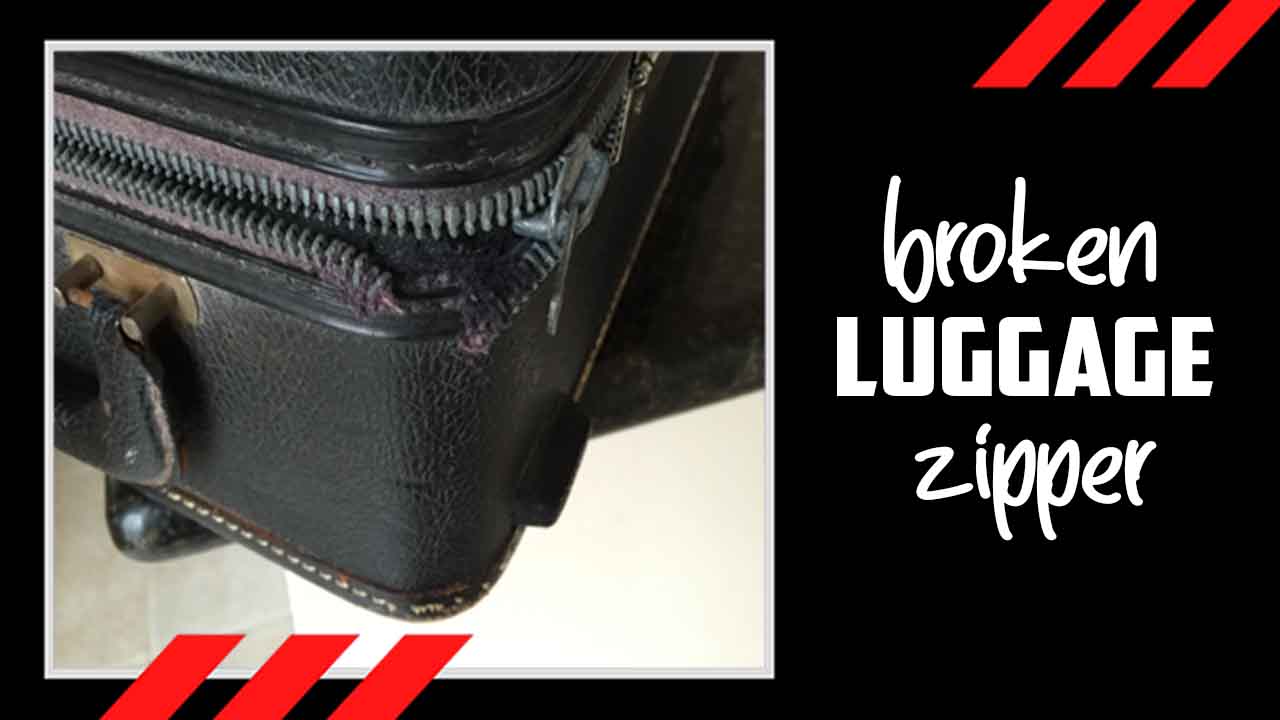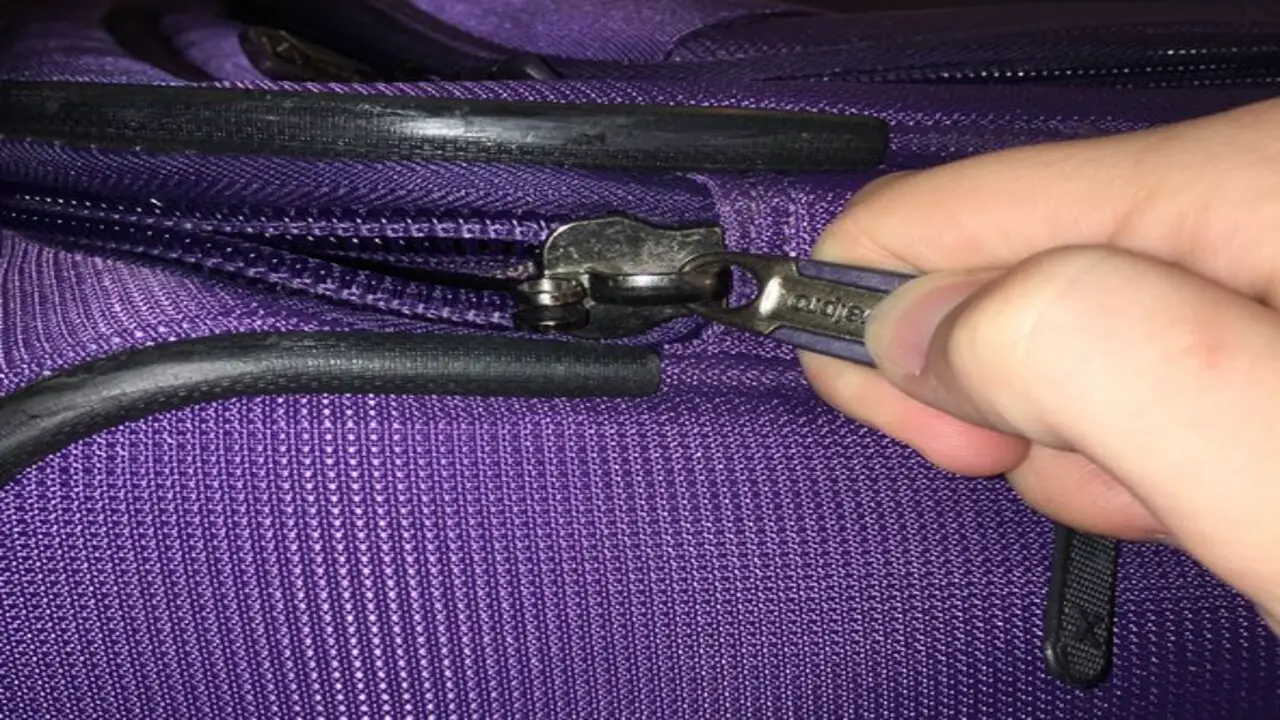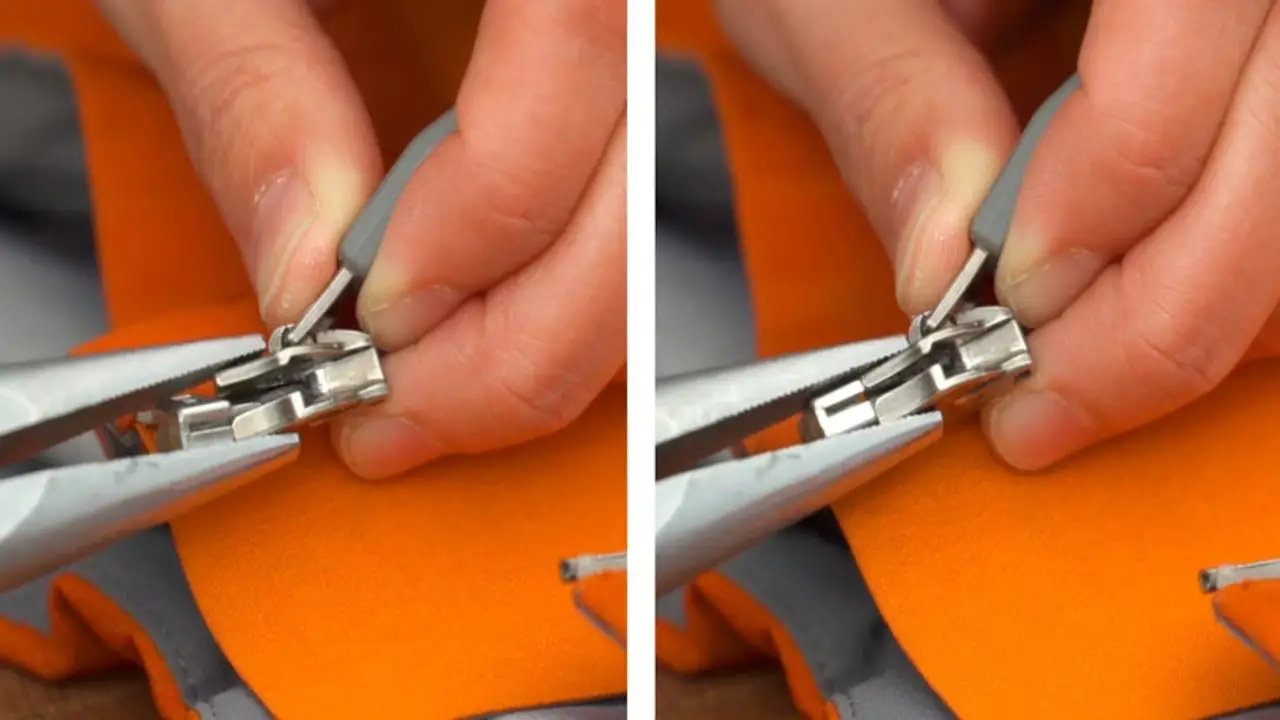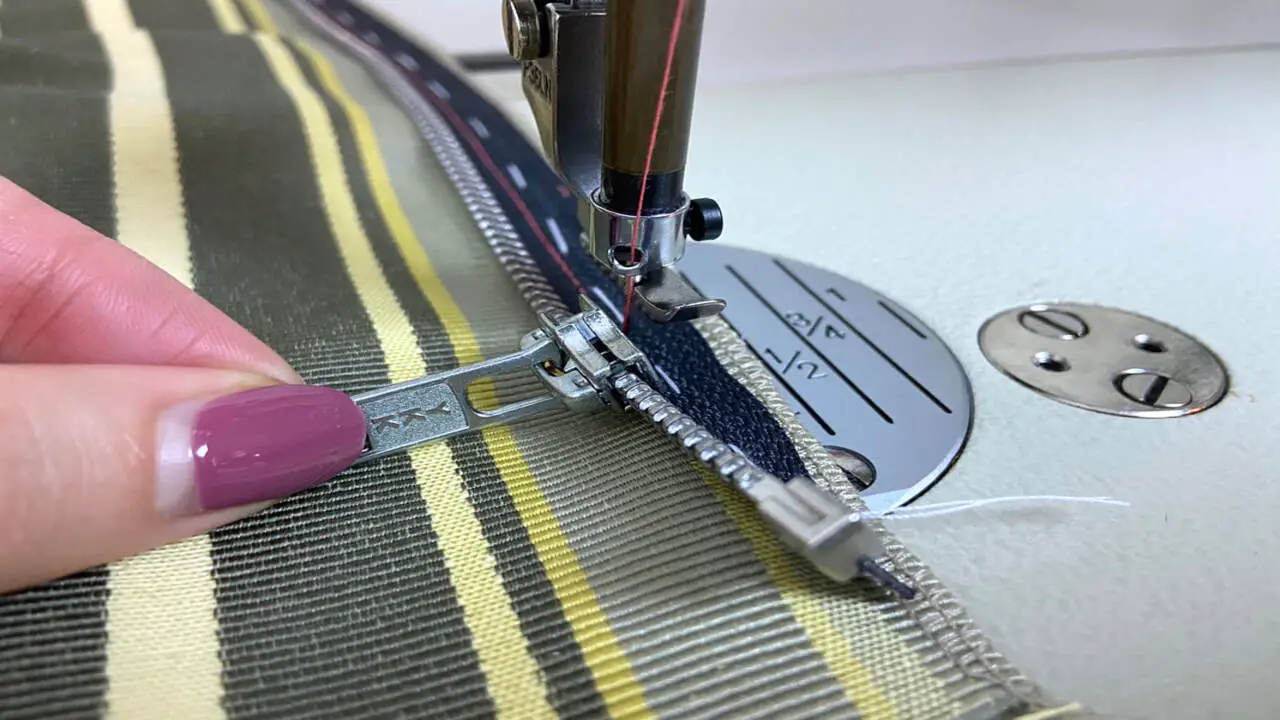A broken zipper can easily ruin your travel plans and leave you stressed and frustrated. It makes it difficult for you to access your belongings easily and exposes them to the risk of falling out or getting damaged during transit.
However, the good news is that you don’t have to throw away your luggage because of a broken zipper. With the right tools and techniques, you can easily repair your luggage zipper and return to your travels.
Here we’ll share step-by-step instructions on repairing a broken luggage zipper, whether a jammed slider, a missing tooth, or a detached zipper pull. We’ll also cover the tools and materials needed to complete the repair and tips for preventing future zipper mishaps.
As a professional traveller or frequent flyer, you want to ensure that your luggage is in optimal condition to make your travels seamless.

8 Steps To Repair Broken Luggage Zipper

A broken luggage zipper can be a headache, especially if you’re about to embark on a long-awaited trip. Fortunately, there are some easy steps you can take to repair it. First, assess the damage. If the zipper pull is missing or the teeth are misaligned, you may be able to fix it by using a pair of pliers to bend the teeth back into place gently.
If the zipper slider is the issue, you can often replace it with a new one. You can find replacement sliders online or at a local hardware store. Another option is lubricating the zipper with wax or soap to help it slide more smoothly. If none of these solutions works, you may need to replace the entire zipper.
In this case, you’ll need a seam ripper to remove the old zipper and a new one to sew. It’s also important to choose a zipper that matches the size and color of the original. Here are step-by-step processes to repair broken zippers.
Assess The Damage
The first step is to assess the damage. Check whether the zipper teeth are intact and the zipper slider is still attached. You may need to replace the entire zipper if the teeth are damaged. However, if the teeth are intact and the slider is attached, you may be able to fix the zipper without replacing it.
You will need a pair of pliers, a needle, and some thread to repair the zipper. Use the pliers to gently pull the slider back to the start of the zipper. Then, thread the needle and make a knot at the end of the thread. Sew the teeth together at the bottom of the zipper using a backstitch. Seep through each tooth and tighten the stitches to keep the zipper closed.
Remove The Old Zipper Slider (If Needed)

If you’re traveling and your luggage zipper breaks, don’t panic. You can fix it with a few simple steps. First, assess the damage to determine if you need to remove the zipper slider or if the teeth are damaged. If the slider needs to remove, use a pair of pliers to pull it off.
Then, attach the new slider to the zipper by sliding it on from the bottom and pulling it up. Make sure it’s securely in place by testing it several times. If the teeth get damaged, gently straighten them using a pair of pliers. If that doesn’t work, use a lubricant like petroleum jelly to help the slider glide over the teeth. Another option is to sew the zipper closed and use the luggage without the zipper.
Align The Zipper Teeth (If Needed)
The best bags sometimes break down, and one of the most common problems that luggage bags face is a broken zipper. A broken zipper can be frustrating, especially when you are in a hurry and must pack your bags. But don’t worry; repairing broken luggage -the zipper is not as difficult as you think. The first step in repairing a broken luggage- zipper is to assess the damage.
If the damage is minor, then you can fix it yourself. The first thing you need to do is align the zipper teeth. If you notice that the teeth are misaligned, you can use a pair of pliers to align them gently. Be careful not to apply too much pressure, further damaging the zipper. Once you align the teeth, try to zip the bag to see if it works.
Attach The New Zipper Slider (If Needed)

When traveling, a broken luggage- zipper can be a huge inconvenience. But luckily, repairing a broken- luggage zipper is not as difficult as it may seem. The first step is to assess the damage and determine if any parts need to replace. If the zipper slider is the issue, you may need to attach a new one.
You must remove the old slider by gently prying it off with pliers to do this. Then, slide the new slider onto the zipper track and use pliers to secure it. Simply slide the pull onto the new or repaired zipper slider and make sure you securely attach it to do this. You can reattach the zipper pull once you have replaced any necessary parts. Simply slide the pull onto the new or repaired zipper slider and make sure you securely attach it to do this.
Zip Up And Down To Test
A broken zipper is undoubtedly one of the most frustrating things for a traveler. However, fixing it is easier than you might think. The first step is to assess the damage. To replace a broken zipper slider, you can easily purchase a new one from a hardware store.
If the teeth of the zipper are damaged, you can try fixing them by gently bending them back into place using pliers. If this doesn’t work, you may need to replace the entire zipper. Once you have repaired or replaced the zipper, testing it to ensure it works properly is important.
Simply move it up and down a few times to ensure it moves smoothly and doesn’t get stuck. This will also indicate to you if any other repairs are necessary. If the zipper doesn’t work properly, lubricate it with wax or a soap bar.
Stitching (If Required)

Repairing it is not as difficult as you may think. First, assess the damage to your zipper. If it is a simple fix like a loose slider or a missing tooth, you can purchase a replacement slider or tooth at a local craft or hardware store. If the damage is more severe, like a broken zipper pull or stitching that has come undone, you’ll need to be more creative.
To repair the zipper pull, you can use pliers to pull the two pieces back together gently. If you must stitch it, sew the zipper back onto the luggage using a heavy-duty needle and thread. Reinforce the stitching with a few extra stitches to ensure durability. If you lack confidence in your sewing skills, you can take your luggage to a tailor or repair shop.
Test The Zipper Again
Repairing a broken zipper can be frustrating, especially when you’re in a trip and need to access your belongings. However, fixing a broken zipper quickly and easily is possible with the right tools and patience. You’ll need a pair of pliers, a needle and thread, and some lubricant.
Begin by gently pulling the zipper tabs apart with the pliers, taking care not to damage the teeth of the zipper. Then, use the needle and thread to sew any loose teeth back into place. If the zipper is still difficult to close, apply a small amount of lubricant to the teeth and work it back and forth until it moves smoothly.
Once you’ve completed these steps, test the zipper again to ensure it works properly. If it’s still not functioning as it should, you may need to replace the zipper entirely or seek the assistance of a professional.
Add Lubrication (Optional)

There’s no need to panic, as there are ways to repair a broken zipper. The first step is to assess the extent of the damage. If it’s a simple fix, you can try repairing it yourself. One option is to try adding lubrication to the zipper. This may help loosen any debris or dirt causing the zipper to stick. However, this step is optional and may not be necessary for all zipper repairs.
If lubrication doesn’t do the trick, you can repair the zipper teeth themselves. This can be done by using pliers to pull the teeth back into their proper position gently. You may need to replace the entire zipper if any teeth are missing or broken. In this case, you can purchase a replacement zipper and sew it in place using a heavy-duty needle and thread.
Conclusion
Zip it up, zip it out! Repairing a broken luggage zipper may seem daunting, but with the right tools and patience, you can give your luggage a new lease on life. Always start by assessing the damage and determining the best course of action.
Whether it’s replacing the slider, the zipper teeth, or the entire zipper assembly, there’s a solution for everyone. So the next time your luggage zipper decides to give up on you, don’t fret, just zip it well and give it the repair it deserves!
FAQ’s
What Are Some Common Causes Of Broken Luggage- Zippers, And How Can They Prevent?
Some common causes of broken zippers include overpacking, forcing the zipper closed, pulling the zipper too hard, and general wear and tear. To prevent broken zippers, travelers can avoid overpacking and distribute weight evenly in their luggage.
What Tools And Materials Are Needed To Repair Broken Luggage- Zipper?
To repair a broken zipper, you will need a needle, thread, pliers, a zipper pull, and possibly a replacement zipper if the existing one is too damaged.
How Can I Determine If The Zipper Can Repaire Or Needs To Replace Entirely?
First, assess the extent of the damage to determine if you can repair the zipper or if you need to replace it entirely. If the teeth are missing or damaged, the zipper must replace.
What Are Some Step-By-Step Instructions For Repairing Broken Luggage- Zipper?
Assess the extent of the damage to the zipper. If the zipper pull is missing or damaged, you may need to replace it. You may need to replace the entire zipper if the teeth are bent or broken.
Are There Any Professional Services For Repairing Luggage Zippers, And How Much Do They Typically Cost?
Yes, there are professional services available for repairing luggage zippers. The cost may vary depending on the damage’s extent and the repair service’s location, but typically it can range from $10 to $50.


